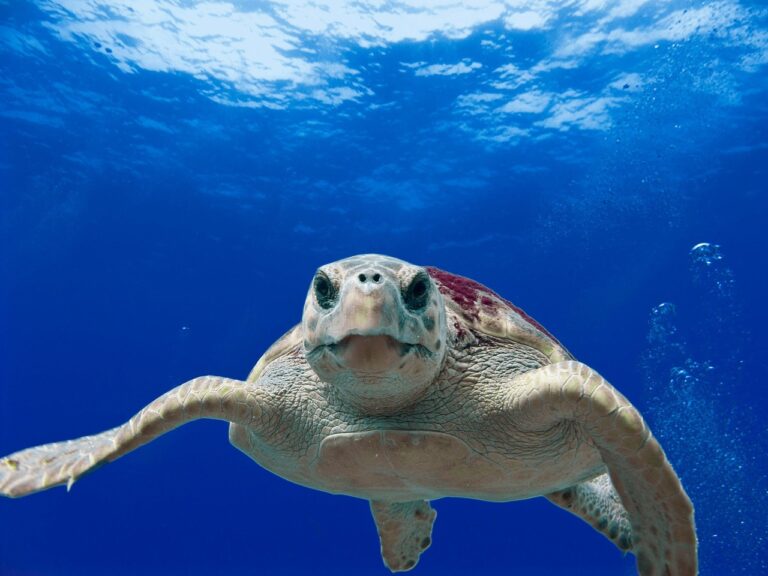Introduction:
Imagine a creature that seems to have stepped out of prehistoric times, a living relic that has roamed the waters for millions of years. Meet the Alligator Snapping Turtle (Macrochelys temminckii), a remarkable and ancient reptile that has fascinated scientists and nature enthusiasts alike. In this article, we will dive into the world of the Alligator Snapping Turtle, exploring its taxonomy, unique physical traits, habitat, behavior, diet, reproduction, conservation status, significance, and much more. Get ready to embark on a journey through time and nature as we unravel the mysteries of this extraordinary turtle.
Taxonomy and Classification:
The Alligator Snapping Turtle belongs to the following taxonomic classifications:
- Kingdom: Animalia (Animals)
- Phylum: Chordata (Chordates)
- Class: Reptilia (Reptiles)
- Order: Testudines (Turtles)
- Family: Chelydridae (Snapping Turtles)
- Genus: Macrochelys
- Species: temminckii
This remarkable species is in a class of its own, with no subspecies known. It is, however, closely related to other snapping turtle species, including the Common Snapping Turtle (Chelydra serpentina).
Description:
Alligator Snapping Turtles are imposing creatures with a range of distinctive physical features. These turtles are the largest freshwater turtles in North America, with some individuals reaching an astonishing weight of up to 200 pounds (90 kilograms). Their shell, called a carapace, can measure between 16 to 32 inches (40 to 80 centimeters) in length.
One of the most remarkable characteristics of these turtles is their rugged, dinosaur-like appearance. They have dark, rough, and deeply wrinkled skin, resembling the bark of a tree. Their coloration varies from dark brown to black, providing excellent camouflage in their natural habitat.
Another standout feature is their massive head, equipped with a powerful jaw that can deliver a bone-crushing bite. This fearsome appearance serves as a formidable defense against potential predators and allows them to ambush prey effectively.
Habitat and Range:
Alligator Snapping Turtles are native to the southeastern United States, inhabiting water systems that flow into the Gulf of Mexico. Their range includes states such as Mississippi, Louisiana, Texas, Oklahoma, Missouri, and parts of Arkansas, Georgia, and Florida.
These turtles are primarily aquatic, favoring slow-moving, freshwater environments like rivers, swamps, and bayous. They are often found in murky waters with plenty of submerged vegetation, logs, and debris, which provide hiding spots and opportunities for ambush hunting.
Behavior and Diet:
Alligator Snapping Turtles are solitary creatures and generally lead a sedentary lifestyle. They are known for their patience when hunting. They use a unique hunting strategy, lying in wait with their mouth wide open, resembling the appearance of a small, pink worm or fish. Unsuspecting prey lured by this mimicry become easy targets for the turtle’s lightning-fast jaw snap.
In terms of diet, these turtles are opportunistic carnivores. Their menu includes fish, amphibians, crustaceans, and even small mammals. Occasionally, they scavenge on carrion. Despite their fierce appearance, they serve as essential scavengers, helping to maintain the ecological balance of their habitat.
Reproduction and Life Cycle:
Alligator Snapping Turtles have an intriguing reproductive cycle. They reach sexual maturity relatively late, typically between 11 and 13 years of age. Mating occurs in late winter to early spring when male turtles actively seek out receptive females. The courtship involves a series of tactile and visual cues.
Females lay their eggs in nests dug into sandy riverbanks, and the eggs incubate for approximately three months. The number of eggs in a clutch can vary but generally ranges from 10 to 50. Hatchlings emerge in the late summer or early fall, making their way to the water. Unfortunately, only a small percentage of these hatchlings survive to adulthood due to predation and environmental factors.
Conservation Status:
The Alligator Snapping Turtle is listed as a vulnerable species on the International Union for Conservation of Nature (IUCN) Red List. Despite their ancient lineage, these turtles face numerous threats in the modern world. Habitat destruction, water pollution, and overharvesting have significantly reduced their numbers in the wild.
Conservation efforts, including habitat preservation, regulation of commercial harvesting, and public awareness campaigns, are crucial for the survival of this species. Many states have implemented strict regulations to protect these turtles, such as limiting the size and number of individuals that can be harvested.
Significance and Importance:
The Alligator Snapping Turtle plays a vital role in its ecosystem. As apex predators, they help control populations of various aquatic species, contributing to the overall health and balance of their habitat. Their presence also serves as an indicator of the ecosystem’s overall health.
Furthermore, these turtles hold cultural significance in some regions, where they are celebrated as unique and charismatic inhabitants of local waterways. Their intriguing appearance and behavior have inspired folklore and legends.
Interesting Facts:
- Alligator Snapping Turtles have been known to live for over a century in the wild.
- Their rough skin is covered in algae and other organisms, providing additional camouflage.
- Despite their fearsome reputation, they are not a threat to humans unless provoked.
- These turtles can remain submerged for extended periods, relying on their powerful lungs to extract oxygen from water.
Protection and Conservation Efforts:
Several organizations and initiatives are dedicated to the conservation of the Alligator Snapping Turtle. These efforts focus on:
- Protecting and restoring their natural habitats.
- Monitoring populations and conducting research to better understand their biology.
- Educating the public about the importance of these turtles and the need for their conservation.
- Advocating for responsible and sustainable harvesting practices where applicable.
Individuals can contribute to the conservation of Alligator Snapping Turtles by supporting these organizations, following local regulations, and promoting responsible behavior when encountering these remarkable creatures in the wild.
Conclusion:
The Alligator Snapping Turtle, with its ancient lineage and awe-inspiring appearance, is a living testament to the resilience of nature. Despite facing numerous challenges in the modern world, this remarkable reptile continues to inhabit the waters of the southeastern United States, playing a vital role in its ecosystem. By understanding and appreciating the importance of this species, we can work together to ensure the survival of these living fossils for generations to come. Let us remember that the true treasure of our natural world lies not just in its future but in the ancient past that persists to this day.



